What is the best microphone for podcasting?
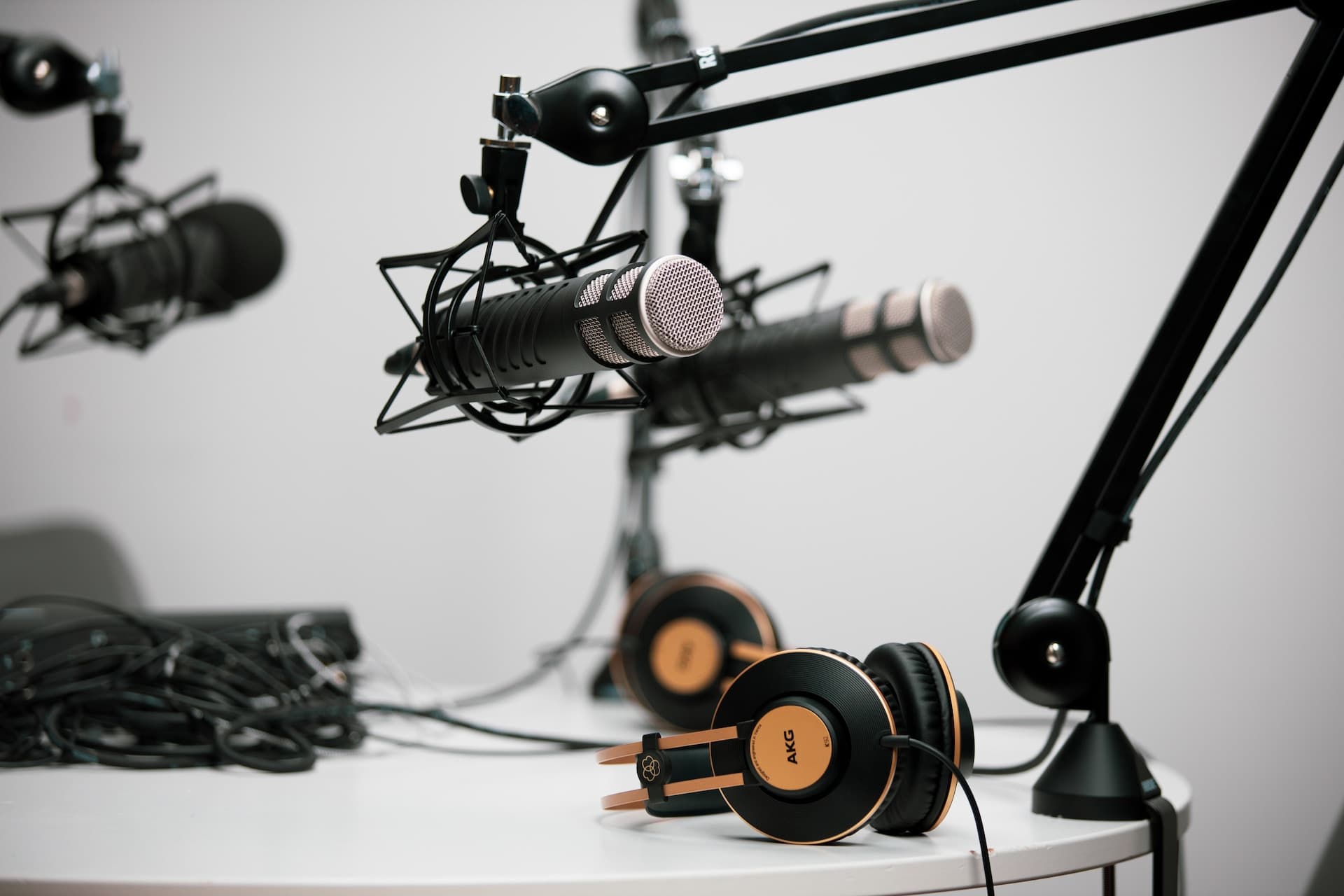
Choosing the best mic is a critical decision for any podcaster. It’s not just about finding the most expensive or feature-packed option; it’s about understanding your needs and finding a microphone that complements your voice, budget and recording environment.
If possible, test different options or speak to podcaster friends to determine which microphone aligns best with your podcasting goals.

We’ve teamed up with B&H Creators, part of B&H Photo which has been selling photo, video, and audio gear in New York for 50 years, to get the inside track on the best podcast microphones.
In this comprehensive guide, we unveil the top contenders, ensuring that you deliver the best podcast for your community. Let’s dive in!
Looking for more introductory information about starting a podcast? Check out our guide How to record a podcast: Tips and tricks for audio success or see our comprehensive Podcast microphone comparison below.
Introduction to Podcasting
Importance of a Good Podcast Mic
A good podcast microphone is crucial for capturing high-quality audio, and it’s the first step in creating a professional-sounding podcast. A good mic can help to reduce ambient noise, minimize plosives, and capture a detailed sound. When choosing a podcast microphone, consider the type of podcasting you’ll be doing, the level of quality you need, and the equipment you already have. For example, if you’re recording in a noisy environment, you may want to consider a dynamic microphone with a cardioid polar pattern to help reduce room noise. The right microphone can make your voice sound clear and engaging, ensuring that your listeners stay tuned in.
1. Shure SM7B
“An industry standard, not just within content creation, but in broadcasting and music recording, is the Shure SM7B,” starts Bridget. “It’s a shotgun microphone so you can mount it on a boom to have it floating right in front of you. It’s a condenser mic, which means that the internal mechanism, the diaphragm – which is essentially like our ear drum but in the microphone and that’s what’s converting the sound waves to electric current to make a recording – is really sensitive. However, unlike dynamic mics, which are known for their durability and ability to handle high volumes without distortion, condenser mics are more delicate and better suited for controlled environments.”
“It’s great if you can use it in a studio location, but it’s also going to make your voice a lot clearer,” Bridget adds. “If you do need to edit or adjust, you’ll have a lot of separation from your main audio source, which would be your closest – in this case, you, the host or guest speaking. Fun fact: it was also the microphone that Michael Jackson used to record Thriller! It’s on the higher end of the mics that you can start out with. It’s about $399 in the US.
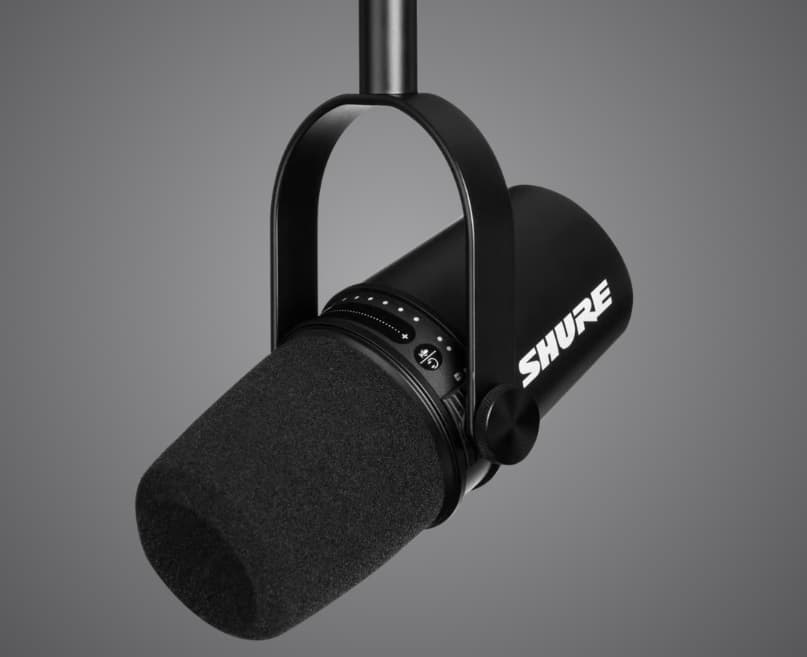 Shure SM7B condenser mic © shure.com
Shure SM7B condenser mic © shure.com
Key features of the Shure SM7B include:
Capsule
Dynamic capsule technology handles loud sound levels without distorting, making it suitable for streaming and gaming.
Voice isolation
The cardioid pickup pattern and voice-isolating technology reduces background noise, ensuring your vocal performance remains clear and focused.
MOTIV App
The ShurePlus MOTIV app provides advanced audio control, allowing you to customize the mic's settings and adjust equalization, gain, and compression.
Zoom-certified
The MV7 mic is Zoom Certified, ensuring seamless compatibility with Zoom virtual meetings and conferencing platforms.
For more information and to buy, go to bhphotovideo.com.
2. Rode PodMic – $99
“If you wanted another option that’s very similar, great quality, but down at about $100, that’s the Rode PodMic,” continues Bridget. “It’s the same as the Shure – condenser mic, same type of diaphragm, and has a better cage, covering of the microphone.”
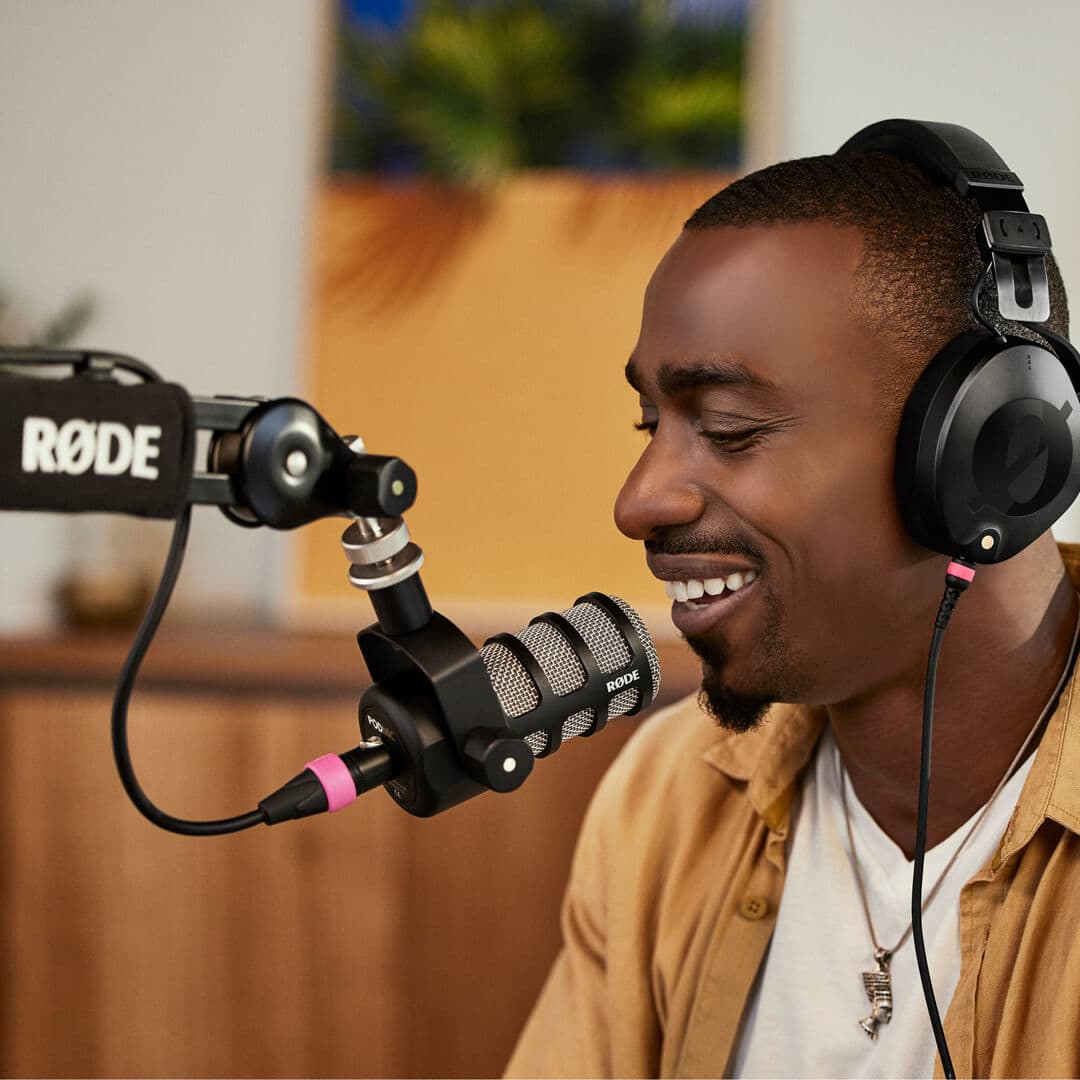 The Rode PodMic is great value © rode.com
The Rode PodMic is great value © rode.com
“It has more of a retro feel so that can provide an interesting option if you’re on camera,” she adds. “These first two mics though, you will have to use an XLR cable for them. That’s to transmit the audio, but also to give it power. If you use them, make sure that you have the right mixer or the right adapters to put in your computer.”
The Rode PodMic sounds great for its price range, making it a suitable choice for content creators, especially for podcasting and streaming.
Key features of the Rode PodMic include:
Rich sound
The PodMic has a warm, full-bodied sound that is perfect for capturing the nuances of speech. It is also able to handle high SPLs without distorting.
Pop filter
The PodMic has an internal pop filter to help reduce plosive sounds, which are those harsh 'p' and 'b' sounds that can ruin a recording.
Swing mount
The PodMic comes with a swing mount that allows you to easily position the microphone where you need it, as well as an internal shockmount to help isolate it from vibrations.
Podcasting specialist
This dynamic microphone with a cardioid pickup pattern is designed specifically for podcasting and broadcasts, at a very affordable price.
For more information and to buy, go to bhphotovideo.com.
3. Logitech Blue Yeti – $129
Bridget continues: “If you don’t want to worry about XLR cables, you can go for a USB microphone that’ll just plug into your laptop or your computer. The Blue Yeti is a really good one. USB mics are known for their simplicity and plug-and-play nature, making them appealing for newcomers to podcasting.”
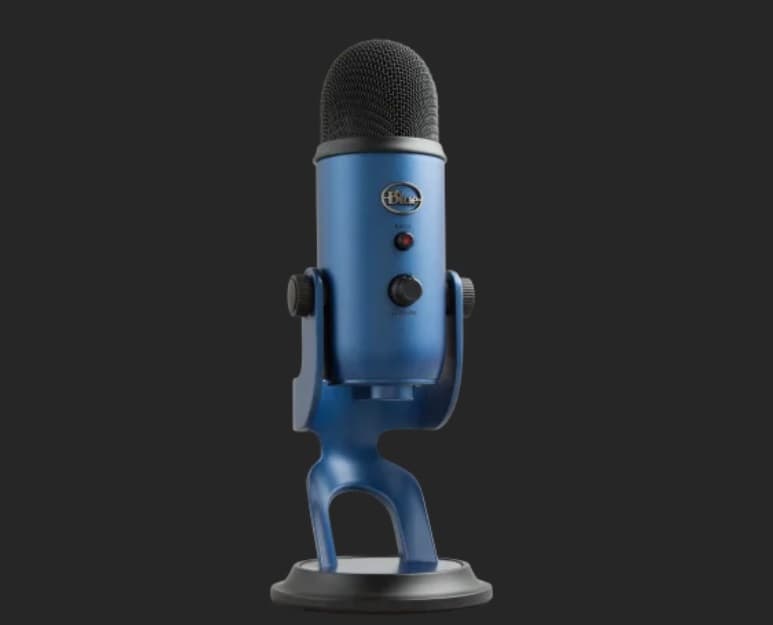 Logitech Blue Yeti USB microphone © logitechg.com
Logitech Blue Yeti USB microphone © logitechg.com
“The Blue Yeti looks reminiscent of older retro radio microphones so again, it might be a good option if you’re also recording video for your podcast,” she says. “This one is about $129 but you aren’t going to have to buy a mixer to go with it, so it’s on a friendlier budget.”
Key features of the Logitech Blue Yeti include:
Polar patterns
This condenser microphone offers four polar patterns: omnidirectional, cardioid, bidirectional and stereo, useful for capturing everything from a single person talking to a group of people playing acoustic instruments.
Plug-and-play
The Blue Yeti connects directly to computers via USB, eliminating the need for external audio interfaces or preamps.
On-mic controls
The Blue Yeti features direct-access controls for gain, mute, and headphone monitoring, allowing for quick adjustments during recording.
Pop filter
The Blue Yeti includes a built-in pop filter to minimize plosive sounds, reducing distracting "popping" sounds.
For more information and to buy, go to bhphotovideo.com.
4. Zoom H1essential - $99.99
“The Zoom recorder has a built-in mic and there’s different inputs that you can use so it’s really great for mobile,” says Bridget. “It comes with stereo mics: if you have two people sitting next to each other, stereo mic will be great for picking up their conversation. It records right to the device but if you need to, there are two ports for XLR cables – or you can plug in a microphone that has a 3.5m headphone jack.”
 Zoom H1essential comes with stereo mics © zoomcorp.com
Zoom H1essential comes with stereo mics © zoomcorp.com
“If you’re traveling and need to record a podcast outside of your normal studio, you’re still going to get great quality and you can record externally so you don’t need to worry about it taking up memory on your phone,” she adds. “You can also have it double up as a mixer for your regular studio setup if you’re just using your computer. The Zoom H1essential is versatile and suitable for different environments, whether on stage, in a home studio, or on the go.”
Key features of the Zoom H1essential include:
32-bit float recording
This state of the art technology gives you consistently clear audio without distortion, editing flexibility, and a simplified setup by eliminating the need for a gain adjustment knob.
Display and guidance
OLED display and audio guidance function for the blind and visually impaired.
Battery life
10 hours of battery life on 2 AAA Batteries or USB-C power.
For more information and to buy, go to bhphotovideo.com.
Types of Microphones
There are several types of microphones available, including dynamic microphones, condenser microphones, and ribbon microphones. Each type of microphone has its own unique characteristics, and the best type of microphone for podcasting will depend on your specific needs and preferences. Understanding the differences between these microphones can help you make an informed decision and choose the best podcast microphone for your setup.
Dynamic Microphone
A dynamic microphone is a popular choice for podcasting due to its durability and ability to handle loud sounds. Dynamic microphones are also less sensitive to ambient noise, making them a great option for recording in noisy environments. The Shure SM7B is a popular dynamic microphone for podcasting, known for its high-quality sound and built-in pop filter. Another great option is the Rode PodMic, a dynamic broadcast microphone designed specifically for podcasting and livestreaming. These microphones are built to withstand the rigors of regular use and deliver consistent, high-quality audio.
Microphone Connectivity
When it comes to connecting your microphone to your computer or recording device, you have several options, including USB, XLR, and wireless connectivity. Each type of connection has its own advantages and can impact the overall sound quality and ease of use of your podcasting setup.
Audio Interface
An audio interface is a device that connects your microphone to your computer and allows you to record high-quality audio. An audio interface can provide a range of benefits, including improved sound quality, increased connectivity options, and enhanced control over your recordings. When choosing an audio interface, consider the number of inputs you need, the type of connectivity you require, and the level of quality you’re looking for. For example, if you’re using an XLR mic, you’ll need an audio interface with an XLR connector. Some popular audio interfaces for podcasting include the Focusrite Scarlett and the PreSonus AudioBox. These interfaces offer excellent sound quality and are compatible with a wide range of microphones, making them a great fit for any podcasting setup.
Special mentions
Here are a few other options that might suit your podcasting needs:
5. Audio-Technica AT2020USB+ – $165
The Audio-Technica AT2020USB+ is a condenser microphone with a cardioid pickup pattern. It’s a popular choice for podcasters because it offers excellent sound quality at a reasonable price. The AT2020USB+ is a USB-only microphone, designed for straightforward applications like podcasting and streaming.

The AT2020USB+ inherits the quality of the AT2020, a studio-level condenser microphone. It produces audio with extended frequency response, ideal for capturing spoken word.
For more information and to buy, go to audio-technica.com.
6. Sennheiser MK 4 Digital – $375
The Sennheiser MK 4 Digital offers a large-diaphragm and utilizes Sennheiser’s Varimotion capsule technology, which ensures a smooth and consistent frequency response over the entire audio spectrum with high fidelity audio. It has received positive reviews for its high-fidelity audio and consistent frequency response.

The low self-noise level makes it suitable for recording even the quietest sounds and its handling of high sound pressure levels (SPLs) without distortion makes it ideal for recording loud instruments and vocals.
For more information and to buy, go to sennheiser.com.
FAQs about the best microphone for podcasting
If you're still unsure about what microphone you might need for your podcast project, we hope these frequently asked questions and answers will provide the information you need:
How do I set up a microphone for podcasting?
Setting up a microphone involves connecting it to your recording device, adjusting the gain, and positioning it correctly. Ensure that you’re in a quiet environment and test the recording levels before starting.
Windows users may face challenges when using USB microphones, particularly when handling multiple audio sources. Unlike Mac users who can create aggregate devices to combine audio interfaces seamlessly, Windows does not provide the same functionality, which could be problematic for podcasters with more complex setups.
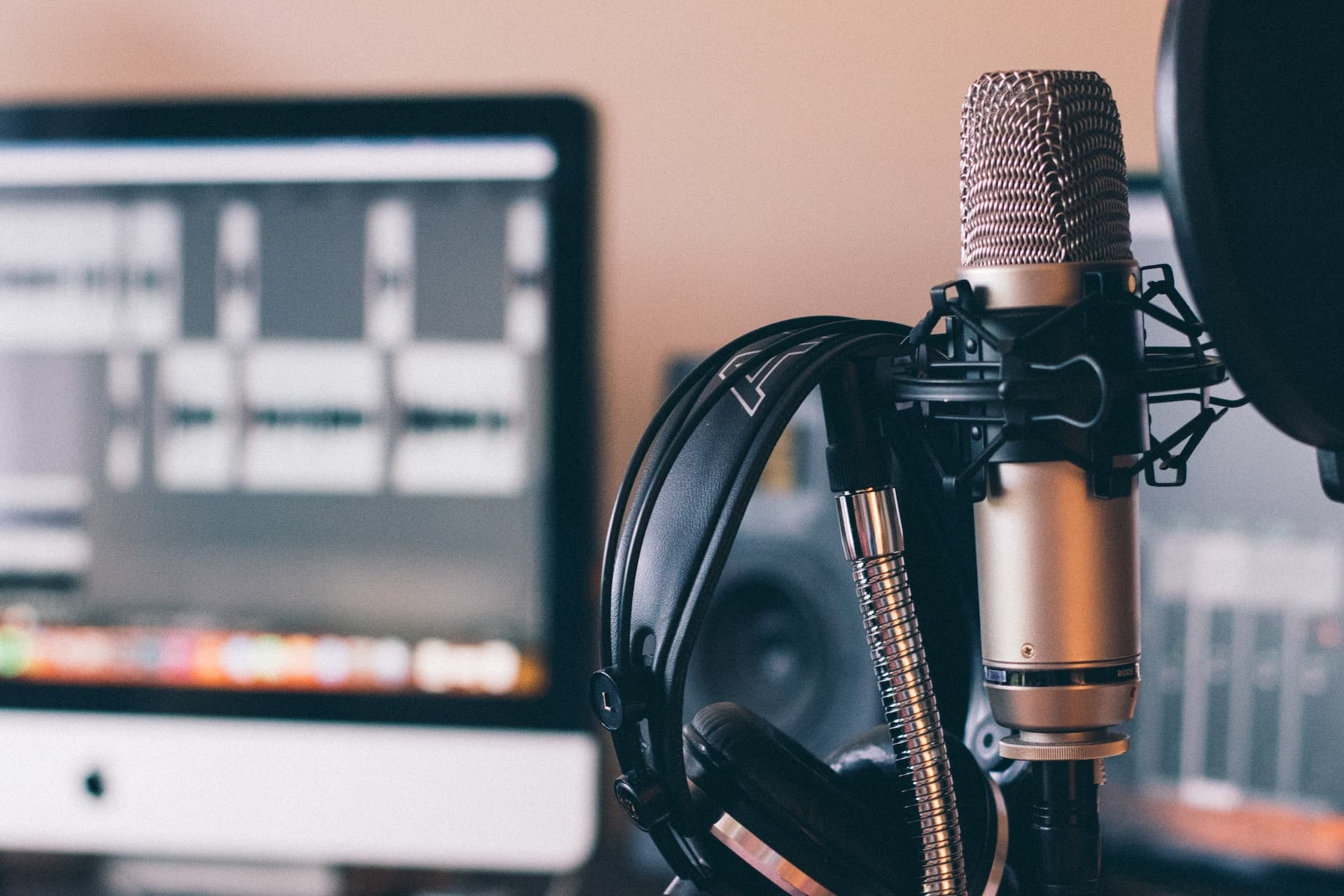
Can I use a smartphone as a podcasting microphone?
While smartphones have built-in microphones, they may not offer the audio quality needed for professional podcasting. Consider investing in an external microphone for better results.
Should I invest in additional accessories for my microphone?
Accessories like pop filters, shock mounts, and foam windscreens can enhance your recording quality by reducing plosives and background noise. Additionally, using a boom arm is essential for achieving a more professional and flexible microphone setup, offering better positioning and sound quality compared to basic desk tripods.
How do I maintain and clean my microphone?
Use a gentle brush or compressed air to remove dust and debris from the microphone grille. Avoid blowing directly into the microphone as moisture can damage the internal components. Additionally, using a shock mount can significantly reduce unwanted noise and vibrations, thereby improving sound clarity.
Can I use a microphone for remote interviews or co-hosting?
Yes, consider using a microphone with an omnidirectional pattern for group recordings or invest in a mixer to accommodate multiple microphones. Additionally, the convenience of having a multifunctional 'one mic' that caters to various users, such as podcasters and streamers, cannot be overstated. These USB microphones often come with built-in audio interfaces, multiple pickup patterns, and loopback functionality, making them an all-in-one solution for streamlined recording and audio management.
Conclusion: Best microphone for podcasting
Selecting the best microphone for podcasting is a crucial step towards producing high-quality content. Consider your specific needs, recording environment, and budget to find the perfect fit. The options presented here are not only industry leaders but also cater to a spectrum of preferences and budgets.
With the right microphone in hand, you'll be well on your way to creating engaging and professional podcasts that captivate your audience. Happy podcasting!
With thanks to B&H Creators
For more information on B&H Creators, follow them on Instagram at @bh.creators or follow Bridget Haggerty at @bhaggertyphoto.
Subscribe for updates
Stay up to date on Memberful's latest product updates, insights, and teaching centered around growing your community.
Have an audience?
Customers like Mythical (28+ million subscribers) rely on Memberful to power their membership communities.
Get started for free